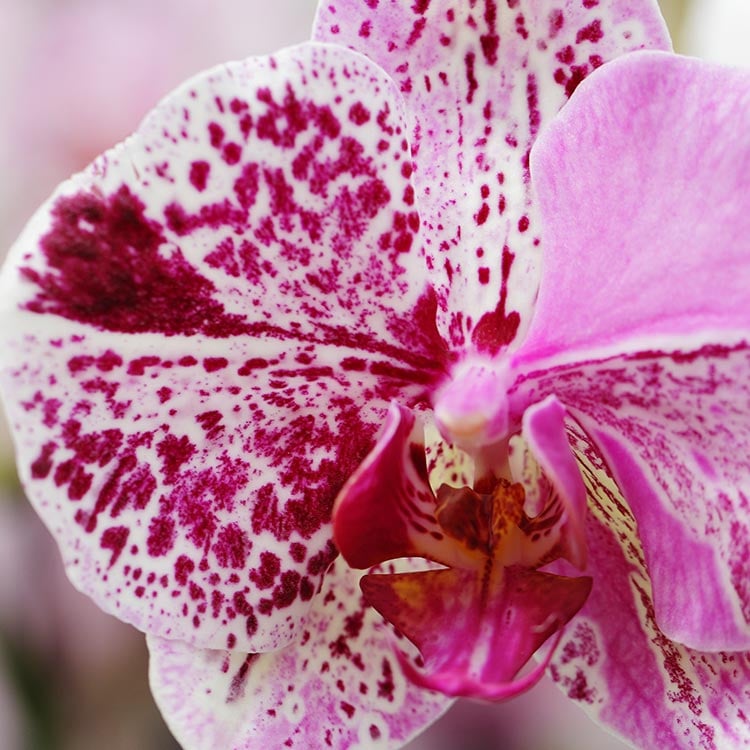
There are thick, seemingly overgrown roots crowding the space on top of your potting media, and there’s something about them that just doesn’t look right. “Do I need to repot my orchid?” you think. If you’ve noticed these roots, there’s only one thing to do…
Relax.
These are called “air roots” and they’re not problematic. In fact, they’re beneficial to your plant. In today’s blog, we discuss four things that are not a threat to your orchid but appear to be.
1. Split leaves: The condition of your orchid’s leaves “Orchid Health: What Your Leaves are Telling You” is usually a good indicator of the health of your plant. For example, leaves tinged with white indicate sunburn, and limp leaves mean your flower is not getting enough water. However, split or broken leaves are more of an eyesore than a threat. Split leaves can occur if an orchid is roughly handled or in the presence of a curious pet or young child.
2. Air Roots: If you see roots growing above the soil, there’s no need to repot your plant. As we mentioned, these are called “air roots” and they’re normal in Phalaenopsis orchids. They absorb moisture and carbon dioxide from the air that your orchid needs to grow. Air roots also act as built-in moisture indicators. If they yellow and shrivel, the air surrounding your plant is low in humidity. You can combat dry air with a humidifier or place your plant in the bathroom when you shower so it can lap up the steam.
3. Helpful insects: We’ve written several posts on how to protect your plant from bothersome critters looking for a snack. But if you see a bug inching up your orchid, you may want to let it continue its trek. Unlike scale and aphids, some insects can protect your plant. For example, ladybugs make a meal out of pesky mites, and Green Lacewing Larvae keep the mealy bug population down.
4. Sticky surface: The final listing is a double-edged sword as it is both harmless and harmful. If you notice a sticky substance on your orchid accompanied by small white ovals that resemble tufts of cotton, this is the harmful kind left by one of your plant’s enemies: scale pests. However, if you notice that your orchid is a bit tacky during the fall season, this is harmless and occurs due to the drop in temperature.
Sometimes things are not as they appear, especially in the case of your orchid. The next time you notice a “problem” with your plant, take a second look: You may find the only threat is the one that you’ve created in your mind.
For more about orchid leaves, download our guide “Orchid Health: What Your Leaves are Telling You.”

Copyright Just Add Ice® Orchids 2023